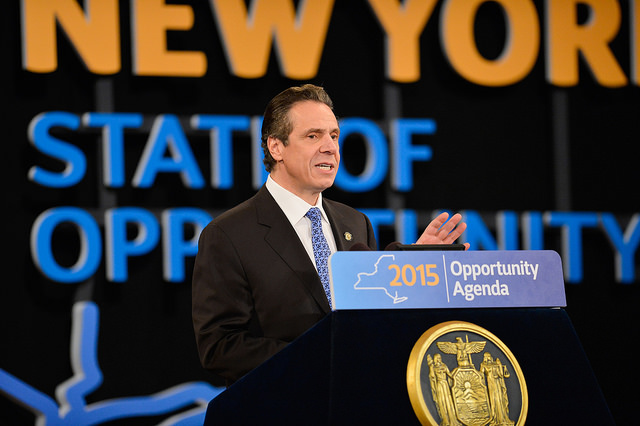School Districts to see increase in state aid, but at a cost

New York State’s adopted budget for 2015-16 includes increases in school aid for all of the districts in Riverhead and Southold towns.
The budget increases school aid by 6.2 percent statewide.
But the extra cash came with some conditions, such as a requirement for school districts to adopt stiffer teacher evaluation systems, the potential for outside teacher evaluators to be brought into districts, and the fact that a higher portion of those evaluations will be based on student test scores — a point of contention for school officials already.
Governor Andrew Cuomo said the changes will “bring accountability to the classroom.”
Local school official disagreed.
“There are serious concerns related to what we understand to be the coupling of mandates for changes to Annual Professional Performance Review tied to a district’s ability to access increases for our aid,” said Mattituck-Cutchogue Superintendent Dr. Anne Smith. “In addition, the results from superintendents and other stakeholders to create an independent task force to develop an improved APPR seem to have been ignored.”
Riverhead School District Superintendent Nancy Carney said they’re analyzing figures to see the full impact of the state aid on the district’s budget.
“As always, we are grateful for the aid,” Ms. Carney said. “I am concerned by some of the changes to education law that are tied to these aid increases, however. In the coming days, we will be reviewing the legislation in full and I am eager to discuss this with the board of education at our next meeting.”
The state aid increase should not have been tied to the governor’s teacher evaluation proposal, which in turn should not be increasingly based on test scores, said David Gamberg, who is superintendent of both the Greenport and Southold districts.
“It’s all predicated on a culture of fear,” he said.
Dr. Smith said the idea of principals leaving their building to observe teachers in other school districts makes little sense.
“Leaving their own students and teachers without support when a crisis occurs is unfathomable,” Dr. Smith said.
Mr. Cuomo saw it differently, saying that New York will set an example for other states with an overhaul of education bureaucracy.
“These reforms – accompanied by an unprecedented financial investment – will put students first by bringing accountability to the classroom, recruiting and rewarding our best teachers, further reducing over-testing, and finally confronting our chronically failing schools,” Mr. Cuomo said in a statement.
School officials felt like they were held hostage when Mr. Cuomo refused to release district-by-district state aid figures with his proposed budget in January until legislators agreed with his teacher evaluation reforms.
Districts have not adopted the budgets they will put before votes in May, so there is time to make changes in response to the stare aid allocations.
State aid increases among local school districts were as follows:
Mattituck-Cutchogue — 5.51 percent increase to $2.49 million
Southold — 4.57 percent increase to $1.798 million
Greenport — 9.07 percent increase to $1.389 million
Oysterponds — 0.81 percent increase to $380,079
Shelter Island — 7.74 percent increase to $539,121
Fishers Island — 1.71 percent increase to $332,374
Riverhead — 8.4 percent increase to $22.84 million
Shoreham-Wading River —6.77 percent increase to $9.35 million
A big portion of the aid increase resulted from a restoration of funding taken from school districts through the “Gap Elimination Adjustment” in the 2010 to 2011 budgets, when the cuts were made due to the bad econony. This budget restored $603 million of that money statewide, although some officials say that’s not enough.
“This year’s budget contained encouraging provisions and disappointing omissions for Long Island,” said Assemblyman Anthony Palumbo (R-New Suffolk). “We have funded the Gap Elimination Adjustment (GEA) with another $600 million and invested an additional $1.6 billion in School Aid, which will help subsidize our tax burdens.
“However, now was the time for us to fully restore the GEA for our schools. A total elimination of the GEA would have been the best result for our children and teachers — we need to fight for it to be completely eliminated next year.”







